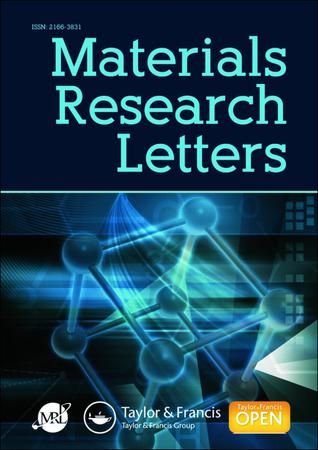Oscillatory buckling reversal of a weak stripe magnetic texture
IF 7.9
1区 材料科学
Q1 MATERIALS SCIENCE, MULTIDISCIPLINARY
引用次数: 0
Abstract
By combining volume sensitive high resolution Magnetic Force Microscopy with surface sensitive X-ray Photoemission Electron Microscopy, we resolved the depth profile of a weak stripe magnetic texture and its evolution upon in-plane magnetization reversal. In contrast to previous reports, we show that the conventional weak stripe texture undergoes a well-defined undulation while the magnetic field is reversed to negative after in plane positive saturation. This transformation is strongly impacting the flux closure caps domains and a staggered Néel caps texture appears. Thanks to quantitative agreement with micro-magnetic simulations, we demonstrate that the existence of both the instability and the staggered Néel caps is intrinsic in negative applied field after positive in plane saturation. This reversal mode is characterized by a checker board pattern of alternating surface magnetic charges and by a longitudinal modulation of the in-plane component of magnetization similar to the oscillatory buckling reversal mode reported in elongated soft magnetic nanostructures. GRAPHICAL ABSTRACT IMPACT STATEMENT Zigzaging magnetic weak stripes have been observed in CoFeB thin films. The characteristics of this new magnetic texture and its origins are revealed thanks to MFM and XMCD-PEEM measurements combined to micromagnetic simulations.弱条形磁性织构的振荡屈曲反转
通过结合体敏高分辨率磁力显微镜和表面敏x射线光电发射电子显微镜,我们确定了弱条纹磁性织构的深度分布及其在面内磁化反转时的演变。与以前的报道相反,我们发现传统的弱条纹结构经历了一个明确的波动,而磁场在平面正饱和后反转为负。这种转换强烈地影响了通量闭合帽域,并出现了交错的nsamel帽纹理。由于与微磁模拟的定量一致,我们证明了在平面饱和为正的负磁场下,不稳定性和交错的nsamel帽的存在是固有的。这种反转模式的特征是表面磁荷交替的棋盘图案,以及平面内磁化分量的纵向调制,类似于在细长软磁纳米结构中报道的振荡屈曲反转模式。图解摘要影响声明在CoFeB薄膜中观察到之字形磁弱条纹。MFM和XMCD-PEEM测量结合微磁模拟,揭示了这种新磁性结构的特征及其起源。
本文章由计算机程序翻译,如有差异,请以英文原文为准。
求助全文
约1分钟内获得全文
求助全文
来源期刊

Materials Research Letters
Materials Science-General Materials Science
CiteScore
12.10
自引率
3.60%
发文量
98
审稿时长
3.3 months
期刊介绍:
Materials Research Letters is a high impact, open access journal that focuses on the engineering and technology of materials, materials physics and chemistry, and novel and emergent materials. It supports the materials research community by publishing original and compelling research work. The journal provides fast communications on cutting-edge materials research findings, with a primary focus on advanced metallic materials and physical metallurgy. It also considers other materials such as intermetallics, ceramics, and nanocomposites. Materials Research Letters publishes papers with significant breakthroughs in materials science, including research on unprecedented mechanical and functional properties, mechanisms for processing and formation of novel microstructures (including nanostructures, heterostructures, and hierarchical structures), and the mechanisms, physics, and chemistry responsible for the observed mechanical and functional behaviors of advanced materials. The journal accepts original research articles, original letters, perspective pieces presenting provocative and visionary opinions and views, and brief overviews of critical issues.
 求助内容:
求助内容: 应助结果提醒方式:
应助结果提醒方式:


